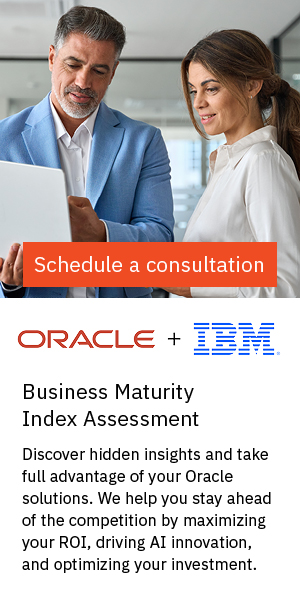Celonis’ transformation evangelist on how AI might be the quickest route to bringing process intelligence to the masses.
With the tech industry continuously putting its trust in AI through development and investment, businesses can also be seen as hopeful about the capabilities AI can add to enterprise technology.
As system transformations are quickly accelerating to match the growing needs of organizations, more companies are taking advantage of the ability to gain end-to-end visibility into their processes. According to Celonis’ transformation evangelist, Kerry Brown, there is a tangible shift to more businesses focusing on closer visibility of their processes, with process intelligence – systematically collecting data to analyze the individual steps within a business process or operational workflow.
Referencing a broad spectrum of industries and organizations, Brown says “End-to-end visibility of processes is something that right now, maybe 50 percent of customers are reaching deeply into, 25 percent have curiosity and 25 percent are still saying, ‘I didn’t think to do that. I didn’t connect those dots’. And when that thought comes to them, they’re saying, ‘Why didn’t I think to do that?”
Comparing these estimations to what Brown would have quoted just a year ago – 25 percent – actively digging in, 50 percent – being curious and 25 percent not thinking about it, organizations’ focus on internal processes is actively on the rise.
Object-centric process mining, defined as a novel approach to process mining moving from static, two-dimensional views of processes to a dynamic, three-dimensional view, is also giving businesses greater insight into what’s working and what’s not working in their departments.
As one example of this approach, Brown shared details about a large oil and gas company Celonis is working with which greatly benefits from the nature of object-centric process mining, allowing it to see its objectives over a multi-year duration, regardless of what system that information is being pulled from. “So the lens they can look through into business behavior, pre-migration and post-migration of those objects and the improvement of process execution, where those objects show up, is much greater.”
Brown adds: “Depending on the size of the organization, the duration of that program and the reality that they’re going to run their business for some period of time on their older systems, and some period on their newer systems, that translation of information through object-centric process mining is becoming more prevalent.”
AI’s practical application in ERP systems
With AI already proliferating in the majority of sectors, its involvement in ERP systems is not taking a back-seat approach either. One example sees an organization which on a busy day is not only looking at the process intelligence but also at how its roles and responsibilities are changing. “So making that more tangible at an execution level, where the human adoption of new ways of working shifts from an available new system design to an actual person executing work successfully, to drive better individual and collective performance in the organization,” Brown explains, while adding: “Also generative Al is used to take unstructured data that exists in the organization, along with the content that’s coming from Celonis from a process lens to give a fuller view.”
Another use case with unstructured data is the ability to take process modeling from a user perspective, delivering policies and procedures of work that they need to do as part of their job – “the ability now to curate the information as their work changes and provide them with exactly what they need, versus: ‘There’s a bunch of stuff on SharePoint.’”
This is allowing for Celonis to curate what the user needs to know about the changing elements and deliver that process and personal information to the targeted consumer, which in itself is amplifying the ability for people to navigate organizational change.
With the often creative ways that people are approaching transformation, Brown shares about a company in the midst of user acceptance testing, which is leveraging generative AI along with the information in Celonis to deliver a heat map showing areas of impact and focus. “While they are taking a brownfield approach and expecting minimal change, for them it is generating a granularity of not only the processes explorer type of information in terms of process intelligence, but now gives them a heat map of the areas where it’s going to change most meaningfully for each user,” she says.
When translating that into the meaningful context for the program that allows for specific testing in those spaces where the ways of working are going to change, it allows for the use of action flows to support users in executing in those spaces. The use of process adherence visibility is targeted at those areas where super users or others go live to see how that’s going to change, because those are the areas of the greatest risk and the likely disruption.
This means that companies can prepare “more intelligently by having targeted business readiness activities and also support models and workflows to wrap around that,” Brown adds.
With AI helping identify data patterns in ERP, in an example beyond the go-live stage, artificial intelligence can contribute to helping actual workers in a process to continue to evolve that work with greater productivity, creativity and information from which to execute their work. This can cast the difference between usual human tendencies which see people using their best memory to perform work tasks as they remember features, functions and capabilities. However, “getting the gift of generative AI is highly multiplying my best memory to take my ideas and give me much greater information from which to execute or improve that work,” Brown explains.
Bringing intelligence to the people
AI might be seen as a great source of excitement in the enterprise technology sphere, yet privacy remains one of the biggest considerations along with access. As many organizations are still determining the safe route to tapping into innovations and the best path for privacy and data management, others are focusing on sharing the most meaningful information.
“The challenge is how do you give the right frame of reference or information to people, ensuring it’s the breadth of information and that is meaningful for the problem they are solving while honoring governance and privacy considerations?” Brown explains. She also highlights the importance of governance around information as another consideration to make sure the decisions you’re making and the information you’re pulling from are truly intelligent for what you’re trying to solve.
Looking ahead into what the future has in store for the industry, Brown envisions that the prevalence of AI in a process area and cross-process areas will flourish.
“Basic intelligence will grow for each individual or process and then broader shared intelligence will grow and foster collaboration across an organization, simply by virtue of having more common data across more consumers. I think that’ll lead to the democratization of the kind of intelligence and insights that we’ve seen owned by Centers of Excellence (COE) or owned by a handful of process intelligence experts,” she says.
In this way, her rich experience points to the expectation that the level of process intelligence will become democratized and every user will have much more information in a much more consumable manner than they have had in the past.
With AI and its practical application increasing, organizations are shifting closer to the concept of having real-time, full information and intelligence that can give them confidence to prepare with the depth of data that can truly result in a program meeting business needs – and doing it in an intelligent way that edges closer to their organization’s goals.
“It’s exciting for people who’ve been in this space for a long time, the things we used to say that we wanted to do, or said: ‘Wouldn’t it be great if we could look at the following?’ Now, you can,” Brown concludes.






